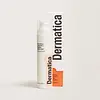What's inside
What's inside
 Key Ingredients
Key Ingredients

 Benefits
Benefits

 Concerns
Concerns

 Ingredients Side-by-side
Ingredients Side-by-side

Water
Skin ConditioningCetearyl Alcohol
EmollientGlycerin
HumectantButyrospermum Parkii Butter
Skin ConditioningC12-15 Alkyl Benzoate
AntimicrobialNiacinamide
SmoothingVitis Vinifera Oil
PerfumingDimethicone
EmollientPanthenol
Skin ConditioningSorbitan Stearate
EmulsifyingSqualane
EmollientTocopheryl Acetate
AntioxidantPhenoxyethanol
PreservativeButylene Glycol
HumectantPolyacrylate Crosspolymer-6
Emulsion StabilisingSodium Lauroyl Lactylate
EmulsifyingCentella Asiatica Extract
CleansingEthylhexylglycerin
Skin ConditioningSodium Hyaluronate
HumectantTrisodium Ethylenediamine Disuccinate
Citric Acid
BufferingCarbomer
Emulsion StabilisingCeramide NP
Skin ConditioningCeramide AP
Skin ConditioningPhytosphingosine
Skin ConditioningCholesterol
EmollientPolysorbate 20
EmulsifyingXanthan Gum
EmulsifyingPalmitoyl Tripeptide-1
Skin ConditioningPalmitoyl Tetrapeptide-7
Skin ConditioningCeramide EOP
Skin ConditioningWater, Cetearyl Alcohol, Glycerin, Butyrospermum Parkii Butter, C12-15 Alkyl Benzoate, Niacinamide, Vitis Vinifera Oil, Dimethicone, Panthenol, Sorbitan Stearate, Squalane, Tocopheryl Acetate, Phenoxyethanol, Butylene Glycol, Polyacrylate Crosspolymer-6, Sodium Lauroyl Lactylate, Centella Asiatica Extract, Ethylhexylglycerin, Sodium Hyaluronate, Trisodium Ethylenediamine Disuccinate, Citric Acid, Carbomer, Ceramide NP, Ceramide AP, Phytosphingosine, Cholesterol, Polysorbate 20, Xanthan Gum, Palmitoyl Tripeptide-1, Palmitoyl Tetrapeptide-7, Ceramide EOP
Water
Skin ConditioningGlycerin
HumectantButyrospermum Parkii Butter
Skin ConditioningPrunus Amygdalus Dulcis Oil
Skin ConditioningGlyceryl Stearate Se
EmulsifyingPrunus Armeniaca Kernel Oil
MaskingOlea Europaea Fruit Oil
MaskingCetyl Alcohol
EmollientStearic Acid
CleansingOryza Sativa Bran Oil
EmollientSodium Levulinate
Skin ConditioningSodium Anisate
AntimicrobialSodium Hyaluronate
HumectantAloe Barbadensis Leaf Juice
Skin ConditioningRetinyl Palmitate
Skin ConditioningGlyceryl Caprylate
EmollientAmorphophallus Konjac Root Extract
HumectantArgania Spinosa Kernel Oil
EmollientTocopherol
AntioxidantXanthan Gum
EmulsifyingSodium Ascorbyl Phosphate
AntioxidantFerulic Acid
AntimicrobialCitrus Nobilis Peel Oil 0.205%
MaskingWater, Glycerin, Butyrospermum Parkii Butter, Prunus Amygdalus Dulcis Oil, Glyceryl Stearate Se, Prunus Armeniaca Kernel Oil, Olea Europaea Fruit Oil, Cetyl Alcohol, Stearic Acid, Oryza Sativa Bran Oil, Sodium Levulinate, Sodium Anisate, Sodium Hyaluronate, Aloe Barbadensis Leaf Juice, Retinyl Palmitate, Glyceryl Caprylate, Amorphophallus Konjac Root Extract, Argania Spinosa Kernel Oil, Tocopherol, Xanthan Gum, Sodium Ascorbyl Phosphate, Ferulic Acid, Citrus Nobilis Peel Oil 0.205%
 Reviews
Reviews

Ingredients Explained
These ingredients are found in both products.
Ingredients higher up in an ingredient list are typically present in a larger amount.
This ingredient is also known as shea butter. It is an effective skin hydrator and emollient.
Emollients help soothe and soften your skin. It does this by creating a protective film on your skin. This barrier helps trap moisture and keeps your skin hydrated. Emollients may be effective at treating dry or itchy skin.
Shea butter is rich in antioxidants. Antioxidants help fight free-radicals, or molecules that may harm the body. It is also full of fatty acids including stearic acid and linoleic acid. These acids help replenish the skin and keep skin moisturized.
While Shea Butter has an SPF rating of about 3-4, it is not a sunscreen replacement.
Shea butter may not be fungal acne safe. We recommend speaking with a professional if you have any concerns.
Learn more about Butyrospermum Parkii ButterGlycerin is already naturally found in your skin. It helps moisturize and protect your skin.
A study from 2016 found glycerin to be more effective as a humectant than AHAs and hyaluronic acid.
As a humectant, it helps the skin stay hydrated by pulling moisture to your skin. The low molecular weight of glycerin allows it to pull moisture into the deeper layers of your skin.
Hydrated skin improves your skin barrier; Your skin barrier helps protect against irritants and bacteria.
Glycerin has also been found to have antimicrobial and antiviral properties. Due to these properties, glycerin is often used in wound and burn treatments.
In cosmetics, glycerin is usually derived from plants such as soybean or palm. However, it can also be sourced from animals, such as tallow or animal fat.
This ingredient is organic, colorless, odorless, and non-toxic.
Glycerin is the name for this ingredient in American English. British English uses Glycerol/Glycerine.
Learn more about GlycerinSodium Hyaluronate is hyaluronic acid's salt form. It is commonly derived from the sodium salt of hyaluronic acid.
Like hyaluronic acid, it is great at holding water and acts as a humectant. This makes it a great skin hydrating ingredient.
Sodium Hyaluronate is naturally occurring in our bodies and is mostly found in eye fluid and joints.
These are some other common types of Hyaluronic Acid:
Learn more about Sodium HyaluronateWater. It's the most common cosmetic ingredient of all. You'll usually see it at the top of ingredient lists, meaning that it makes up the largest part of the product.
So why is it so popular? Water most often acts as a solvent - this means that it helps dissolve other ingredients into the formulation.
You'll also recognize water as that liquid we all need to stay alive. If you see this, drink a glass of water. Stay hydrated!
Learn more about WaterXanthan gum is used as a stabilizer and thickener within cosmetic products. It helps give products a sticky, thick feeling - preventing them from being too runny.
On the technical side of things, xanthan gum is a polysaccharide - a combination consisting of multiple sugar molecules bonded together.
Xanthan gum is a pretty common and great ingredient. It is a natural, non-toxic, non-irritating ingredient that is also commonly used in food products.
Learn more about Xanthan Gum